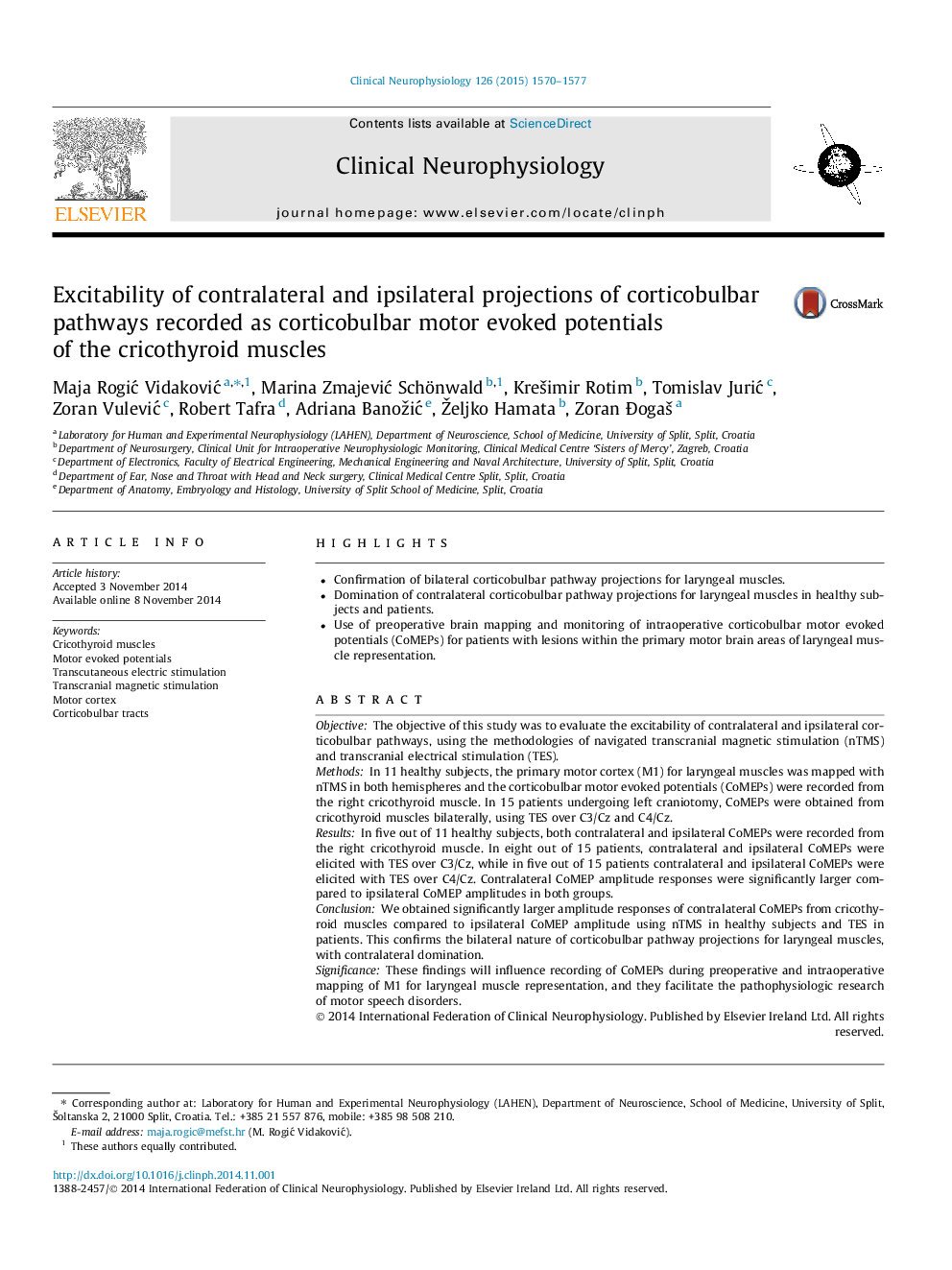| Article ID | Journal | Published Year | Pages | File Type |
|---|---|---|---|---|
| 3042558 | Clinical Neurophysiology | 2015 | 8 Pages |
•Confirmation of bilateral corticobulbar pathway projections for laryngeal muscles.•Domination of contralateral corticobulbar pathway projections for laryngeal muscles in healthy subjects and patients.•Use of preoperative brain mapping and monitoring of intraoperative corticobulbar motor evoked potentials (CoMEPs) for patients with lesions within the primary motor brain areas of laryngeal muscle representation.
ObjectiveThe objective of this study was to evaluate the excitability of contralateral and ipsilateral corticobulbar pathways, using the methodologies of navigated transcranial magnetic stimulation (nTMS) and transcranial electrical stimulation (TES).MethodsIn 11 healthy subjects, the primary motor cortex (M1) for laryngeal muscles was mapped with nTMS in both hemispheres and the corticobulbar motor evoked potentials (CoMEPs) were recorded from the right cricothyroid muscle. In 15 patients undergoing left craniotomy, CoMEPs were obtained from cricothyroid muscles bilaterally, using TES over C3/Cz and C4/Cz.ResultsIn five out of 11 healthy subjects, both contralateral and ipsilateral CoMEPs were recorded from the right cricothyroid muscle. In eight out of 15 patients, contralateral and ipsilateral CoMEPs were elicited with TES over C3/Cz, while in five out of 15 patients contralateral and ipsilateral CoMEPs were elicited with TES over C4/Cz. Contralateral CoMEP amplitude responses were significantly larger compared to ipsilateral CoMEP amplitudes in both groups.ConclusionWe obtained significantly larger amplitude responses of contralateral CoMEPs from cricothyroid muscles compared to ipsilateral CoMEP amplitude using nTMS in healthy subjects and TES in patients. This confirms the bilateral nature of corticobulbar pathway projections for laryngeal muscles, with contralateral domination.SignificanceThese findings will influence recording of CoMEPs during preoperative and intraoperative mapping of M1 for laryngeal muscle representation, and they facilitate the pathophysiologic research of motor speech disorders.
